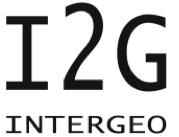The main objective of the Intergeo Project is to make digital content for mathematics teaching in Europe more accessible, usable and exploitable.
Intergeo will...
- offer content in a searchable and metadata-tagged portal.
- enable users to use their software of choice by specifying a common file format based on open standards.
- test available material in the classroom. All stakeholders, software teams, resource authors, teachers and learners will be involved, in order to promote quality enhancement cycles.
Interactive Geometry is a way to improve mathematics education with the help of a computer. With the help of sophisticated software sketches and figures can be brought to life, comparable to what movies mean to images. Although many examples of helpful activities that were created using Interactive Geometry Software exist, interactive geometry software is still not used regularly in classrooms. In fact, many teachers do not know about the new possibilities, or they do not have access to the necessary resources.
The EU-co-funded project Intergeo will attack the three main barriers for a EU-wide adoption of the existing material: missing search facilities, lack of interoperability, and missing quality information. The available content will be enriched with curricular Meta-data that makes it easy to find the proper examples for a certain teaching situation. The intellectual property rights for the content will be cleared. Teachers should not have to bother whether they are allowed to redistribute material to their students or not.
Also, a common file format for interactive geometry software will be provided. Because the project consortium includes leading commercial and open source software suppliers for interactive geometry this format will enable teachers to use the content regardless of which software they use. Finally, experts in mathematics education will test material for its classroom suitability and make this data available to others.
Teachers all over Europe will be able to use and re-use quality teaching material. The project partners already identified more than 3000 resources that will serve as an initial seed for the database. User contributions to it are highly encouraged, both for content and quality assessment. The project involves contact persons from the governments and school administration, as well as curriculum experts. Software and content providers as well as people working in math education can join the project as associate partners. After the official project duration of three years the infrastructure will be transferred to the public for a sustainable success of the initiative.
Partner
University of Education Schwäbisch Gmünd, Université Montpellier, Cabrilog SAS, University of Bayreuth, Université du Luxembourg, University of Cantabria, TU Eindhoven, Maths for More, University of South Bohemia Ceske Budejovice


